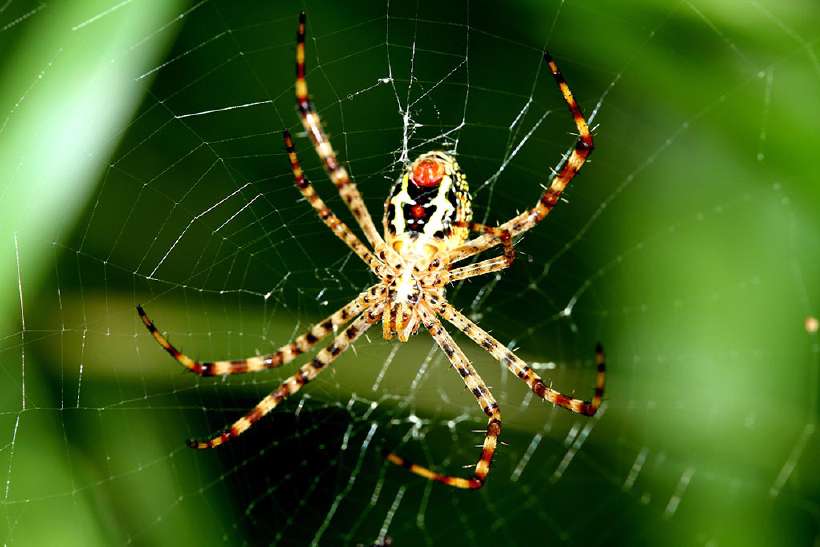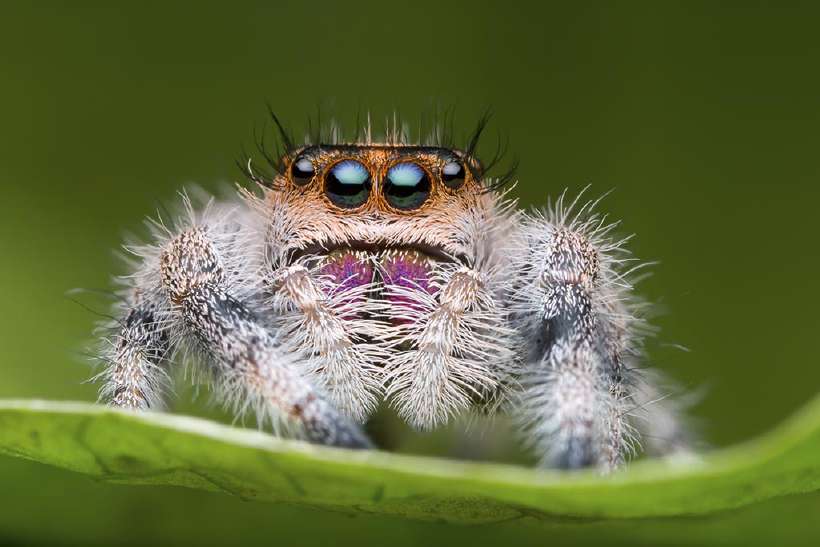Spiders and their Magical Web
Home / Science for Kids / Planet Earth for Kids / Spiders and their Magical Web
Most of us have come across cobwebs that accumulate in our walls, and ceilings when we dust our homes. The webs are under tables, cellars, and sometimes across branches and leaves at the park. All these cobwebs are the work of spiders.
Spider webs are fine silken threads. Originally spiders spun silk to protect their eggs and to line their nests. But later they adapted to use this silk to weave a web and trap their prey. Sometimes it is also used to provide a safety line so that if they fall, they get suspended in the air.
But despite all this evidence, most spiders do not spin webs. They rely on their speed – like the common house spider – and mobility to catch their prey or to steer away from danger. Spiders that don’t spin webs are sometimes venomous as they lurk in burrows, trees and buildings until their prey comes to them. These spiders rely on speed and surprise rather than webs.

Nearly all the world’s 40,000 species of spiders originated from marine creatures about 400 million years ago. But these spiders have changed themselves through a process called adaptive radiation. This means that spiders have evolved to fit their surroundings and environment according to the changes in nature, food and climate.
Spiders are not insects. Biologists classify them as ‘arachnids’. Arachnids are different from insects as they have eight legs and no antennae. Scorpions, mites and ticks also come in this category.
Spider webs are extremely light and incredibly strong. They are finer than silk but have a breaking strain greater than that of steel. The silk of the golden orb spider found across the world is the strongest known natural fibre.
Different kinds of spiders spin and weave different webs. The trapdoor spider makes a trip line, across which insects trip and alerts the spider. The trip line is similar to a piece of thread stretched at a height of ten inches across a doorway. Since we don’t expect any barrier we tend to trip on this line and fall down.

The American black widow spins a tangled web and attaches it to the ground or a tree like an anchor while stretch a fine sticky line of thread to their hideout. Unsuspecting insects get caught in the web and the spider hauls them in.
The net-throwing spiders weave a web like a napkin holding it with their front four legs like a fisherman ready to throw his net. They lunge on to their prey and capture them in the net. The more the prey struggles the more the victim gets imprisoned.
However, the bolas spiders adopt the most interesting technique. The bolas spider dangles a large sticky globule (thick mass) at the end of a single line of silk thread. The globule attracts moths. When the spider senses the vibrations of the wings, it twirls the globule faster and faster like a bolas, and traps the moth on this lump of bait. It then lures the moth up like a fisherman landing a fish!
Spiders are unique in other ways. They can detect infrasonic sounds (Human hearing is between 20 to 20,000 hertz. Anything above 20,000 hertz is called ultrasonic and anything below is called infrasonic.) caused naturally by earthquakes and some respond to sounds above 45,000 hertz.
All spiders except spiders of the Uloboridae family are venomous. The potency of the poison varies from specie to specie. While some can kill the prey, others paralyse the prey.
Spider bites are rarely fatal to humans. They may cause pain or sickness but rarely death. However, in the rare case of the Australian funnel-web spider, animals manage to survive the bite while the poison is fatal to humans!
633 words |
6 minutes
Readability:
Grade 6 (11-12 year old children)
Based on Flesch–Kincaid readability scores
Filed under: planet earth
Tags: #poison, #insects, #species, #weave, #spiders, #venomous
You may also be interested in these:
How Bad is the Sting of a Scorpion?
The Deadliest Animal in the World
The Spider on the Wall
The Wonderful World of Insects
Which Insects Live the Longest?